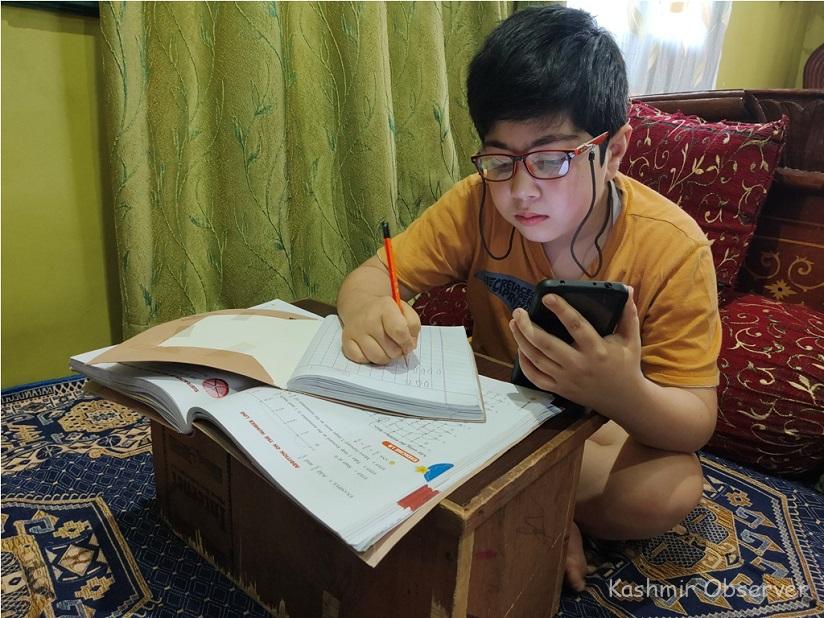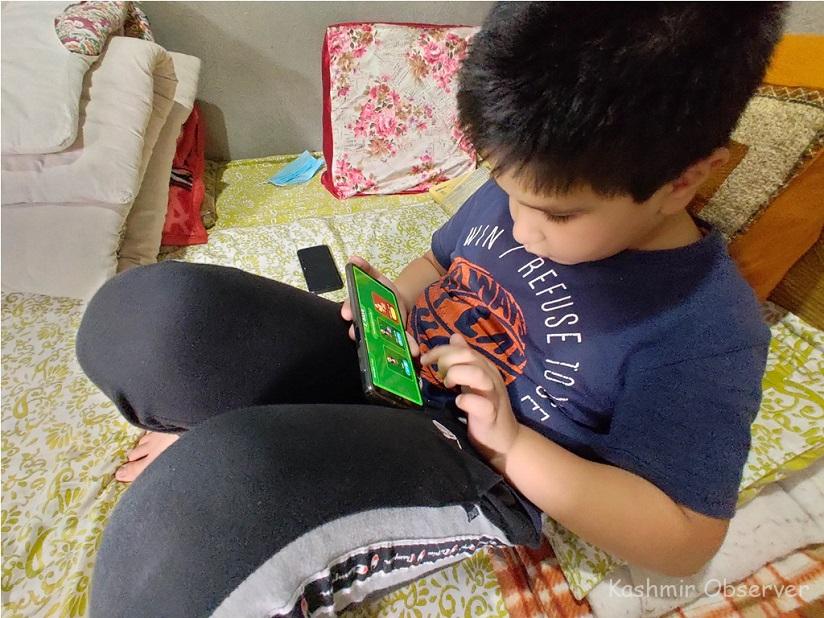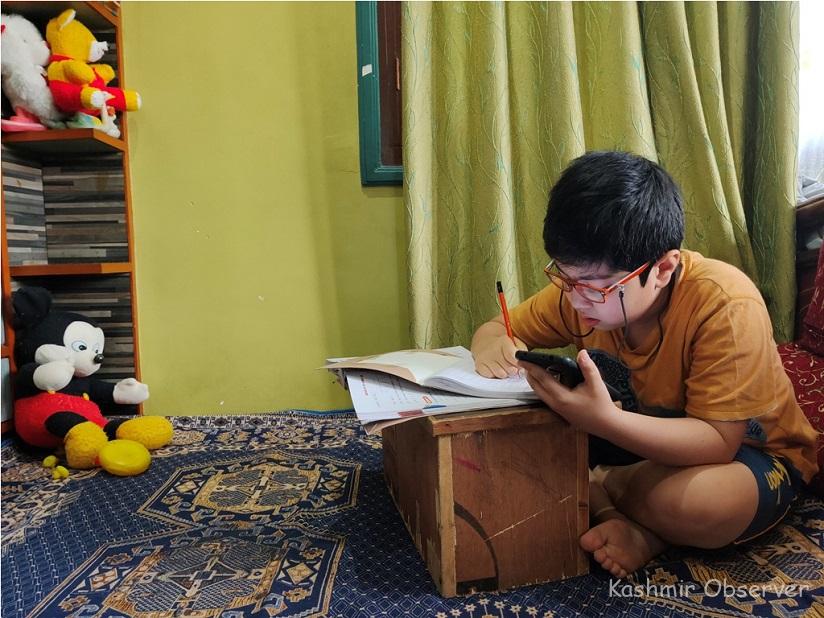
As the pandemic nears two years, there’s an increase in the number of students complaining of eye-related problems and complications due the increase in the screen-time for online classes.
AFEEFA Anees is once again preparing for the worst. As the possible third wave is making e-learning a way of life again in Kashmir, the mother of two from Srinagar’s Downtown area fears it might once again come at a heavy cost.
It was only after few months of attending online classes that her son Muhammad Mushahid started complaining of blurry vision last year amid pandemic.
“I took him to an ophthalmologist who advised him to wear eyeglasses,” Afeefa, 37, says.
Before leaving his clinic, the eye specialist told the anxious mother that her son had developed eye complications due to excessive use of mobile phone.
“As a mother I keep an eye on my son as he sticks to the smartphone on the pretext of attending online classes,” she says. “This has already given him a blurry vision.”
As the pandemic nears two years, there’s an increase in the number of students complaining of eye-related problems and complications due the increase in the screen-time for online classes.
“Online classes have become a headache for parents,” Saima Hassan, another anguished young mother from Srinagar, says. “I can’t reconcile with the fact that my son Absaar, a second-grade student, is a mobile-phone addict.”
While online classes might’ve given students a field day with smartphones, many blame the style of contemporary Kashmiri parenting raising their new born with YouTube cartoons. Saima’s son is one of those ‘YouTube babies’ of Kashmir.

As she narrates ordeal of her son, nine-year-old Absaar is busy playing games on the mobile phone. She quotes her son saying, “I will only study if you give me access to mobile phone”.
Absaar uses online classes as a pretext to get access to a mobile phone. But when the same routine gave him frequent headaches, an oculist recommended him wear eyeglasses.
Apart from this smartphone-driven parenting problem, the sustained screen learning is leaving Hakim Zahra in tears.
She first noticed the toxic change when she attended school and tuition classes online for hours together over a span of few months.
“At first I was not sure why my eyes were teary,” Zahra, a Class 11 student, says. “Over the time I realized the more screen-time I share, my eyes would shed tears and I started to experience blurry vision. It got aggravated to the extent that I could not sleep anymore.”
She went to an eye specialist who recommended her eyeglasses. Since then she has seen some improvement in her eyes.

Experts suggest the increase in the dryness of eyes and blurry vision is a result of exponential increase in screen-time by students.
To reduce the number of hours children spent in front of their laptops and mobile phones, the Union Human Resource Ministry, last year had suggested capping the duration of online classes and also limiting the number of sessions for students.
The guidelines by the Ministry of Human Resources Department (HRD) are called “Pragyata”.
According to their recommendation, the students from Class I to VIII should not have more than two online classes per day, each lasting around 30-45 minutes.
For classes IX to XII, the HRD Ministry had recommended four online classes per day up to the duration of 45 minutes each, which roughly equates 3 hours of classes per day.
The guidelines further direct that kids in pre-primary classes should not spend more than 30 minutes on their online classes.
However, the authorities have failed to implement these guidelines leaving the Kashmiri student community prone to more screen-time which has potential to cause eye-related complications.

Dr. Shazia Shafi, an ophthalmologist working at Sharp Sight Hospital, says there has definitely been an increase in footfall of patients since the pandemic started.
“Increasing number of kids are having eye complications like colour vision loss,” Dr. Shazia having an expertise in cataract and glaucoma says.
“Screentime should be restricted,” she added. “Even in-between their classes, students should take breaks and follow the 20-20-20 rule.”
Elaborating about the rule, the ophthalmologist says that after screentime of twenty minutes one should try to look at distant objects and try to blink eyes twenty times.
“The blinking of the eyes stops while looking continuously at the screen,” the ophthalmologist says. “As a result the moisture in the eyes also decreases. It leads to dry eyes and strain. With conscious learning techniques, all this can be handled.”
Follow this link to join our WhatsApp group: Join Now
Be Part of Quality Journalism |
Quality journalism takes a lot of time, money and hard work to produce and despite all the hardships we still do it. Our reporters and editors are working overtime in Kashmir and beyond to cover what you care about, break big stories, and expose injustices that can change lives. Today more people are reading Kashmir Observer than ever, but only a handful are paying while advertising revenues are falling fast. |
| ACT NOW |
| MONTHLY | Rs 100 | |
| YEARLY | Rs 1000 | |
| LIFETIME | Rs 10000 | |










